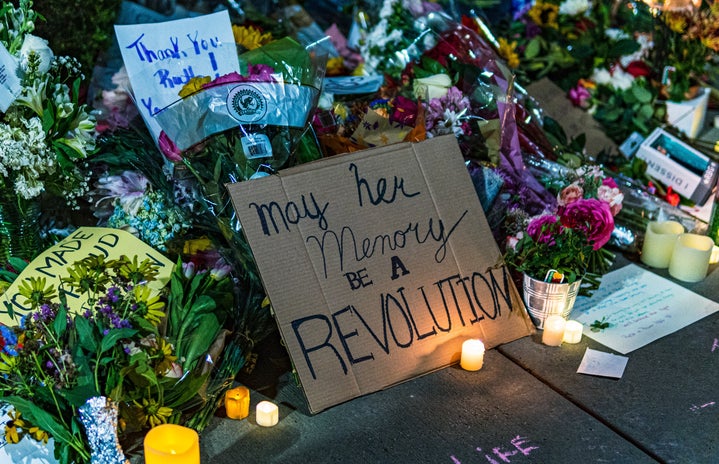Ruth Bader Ginsburg, the former Supreme Court Justice, was born in 1933 – the same year Hattie Wyatt Caraway became the first female Senator. Despite this, and representation in Congress, the Supreme Court had never yet held a female judge. At the beginning of the twentieth century, women were still fighting for their fundamental rights: equal pay, sexual freedom and liberation from antiquated restrictions set by men.
In 2020, we are still fighting for many of those same rights.

Since 1933, only four women have ever served on the Supreme Court, Ginsburg herself included. Congress is currently made up of 23.7 percent of women, which disproportionately represents the US population. Women continue to make 85 percent of men’s wages, according to the Pew Research Center. Public schools in 37 states mandate abstinence in sexual education, further limiting young women’s choices.
But Ginsburg grew up in a world where women’s rights were not even tolerated, or vouched for on local and national levels. She was raised in a time before universities like Harvard and Yale allowed female undergraduate students; before the passage of Roe V. Wade; before women were granted the right to financial freedom without the oversight of a spouse or male family member.
The Justice became a woman at a time when womanhood was not stylish, fashionable or protected by law, yet she chose to be resilient, and she fought for the rights of all women by shattering glass ceilings and not taking no for an answer. Her grit was shared by many women of the time who were frustrated by the status quo, and refused to allow their daughters to grow up in an unfair world.
Like pioneers who came before her – namely Sojourner Truth, Susan B. Anthony, and Harriet Tubman to name a few – Justice Ginsburg championed the rights of the marginalized and leveraged her power to be a changemaker on the Court, standing alongside progressive female colleagues like Sonia Sotomayor to do so. She vouched for women’s access to higher education in United States v. Virginia, equal pay in Ledbetter v. Goodyear Tire, and access to birth control in Burwell v. Hobby Lobby Stores, Inc.
Now, with her passing at the age of 89, women should recognize how far we’ve come, in part because of women like Justice Ginsburg, while too recognizing just how far we have to go. While significant strides have been made, there’s simply too much to do without disillusioning ourselves into thinking our country is a safe place for all women. Rather, it’s the opposite. America is a dangerous place to be a woman of color, a LGBTQIIA+ woman, or a young woman.
Women deserve to live in a country that does more than tolerate them or partially protect us from the woes of the patriarchy. We deserve to live in a country that celebrates us, lifts us up, and protects us from institutional patriarchal inequity that thrives in this country. I am grateful for the women who came before me and the changes they made which undoubtedly altered my life forever, but we shouldn’t be satisfied with equality for some women most of the time.
Justice Ginsburg certainly wouldn’t be.


